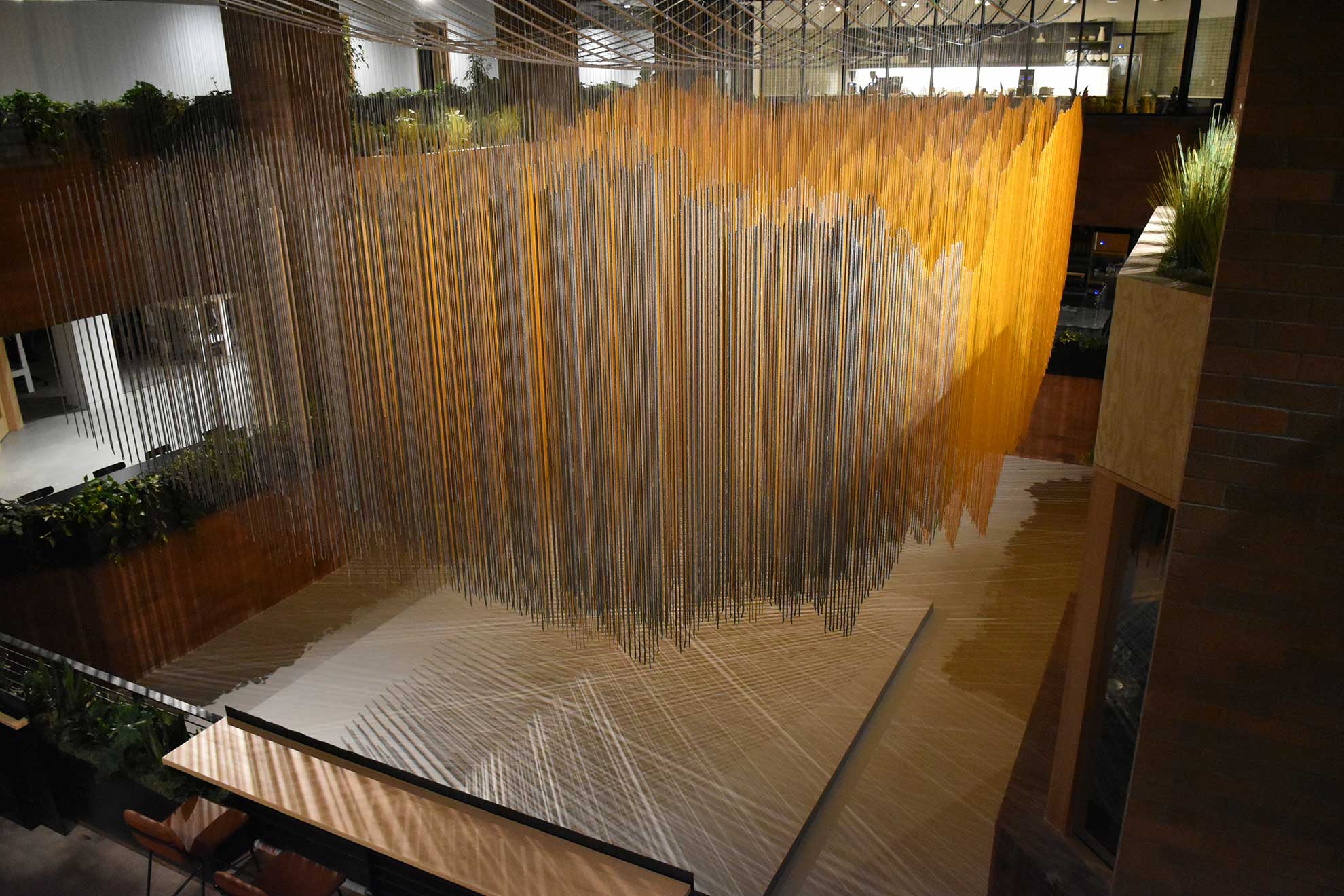Maker’s Profile
Installation artist Rachel Mica Weiss gives materials life in unexpected ways
At Airbnb, we’re constantly inspired by the makers in our global community, and the work they produce. We often partner with local artists and designers to create our own products. Our Makers series is a celebration of craft that highlights the talented individuals we’re grateful to be connected with.
Rachel Mica Weiss has always had a creative way about her—from creating as a kid to building her own loom in grad school. Originally from Washington, D.C., it was a trip abroad while pursuing a degree in psychology that cemented her path as an artist.
In a recent conversation, Rachel shared more about the path that led to her chosen career, how she dives into the creative process, and what it takes to succeed in the sculpture and installation industry. Here’s what she had to say.
Tell me a little bit about yourself. Where are you originally from?
I grew up in the DC area, and have always been an artist. I started drawing and creating at a very young age. In high school, I didn’t know or have access to professional artists, so it didn’t really occur to me that it could be a career. But then I attended a pre-college course at RISD and professional art came onto my radar.

Did that creative drive carry through into your college education?
I ended up going to Oberlin College to pursue a degree in psychology. Creativity has its ebbs and flows. There were times in college when I didn’t have the space to make anything, so I was more creative in the kitchen.
But then during my junior year, I traveled to Senegal for an abroad program and was fully immersed in an artist community. It was the first time I was surrounded by adult artists in a community that was designed for just that. That month was one of the happiest moments of my life, and it’s the reason I found art as my true calling.
Did anything change when you returned to Oberlin from Senegal?
I signed up for art courses and finished my degree in psychology. After Oberlin, I attended the Maryland Institute College of Art (MICA) in Baltimore. This is where I learned how to weave. Weaving completely changed the way I thought about art and materials. I actually built my own loom during grad school, just to see how far I could push the limits of fabric.

Wall of Portraits | MediaMath, 4 World Trade Center | Image by Paula Abreu Pita, courtesy of artist
What was your first commissioned sculpture or installation? How were you connected with the client?
My first large-scale commissioned piece was in 2015. It was a wall installation for MediaMath, a company opening an office at Four World Trade Center. They found me through a fortuitous connection—a friend and colleague from graduate school, Alissa Polan, and her co-curator, Blair Murphy, invited me to propose site-responsive work for MediaMath’s lobby.
Was it challenging to create a piece in that space, considering the history of the location?
Alissa and Blair were responsible for MediaMath’s global art collection and for that location, they wanted something both interesting and challenging. The project was challenging because I had to find a balance between honoring the history of the Four World Trade Center site, while also representing the personality of the company. The piece needed to be read in many different ways—from sobering to playful.
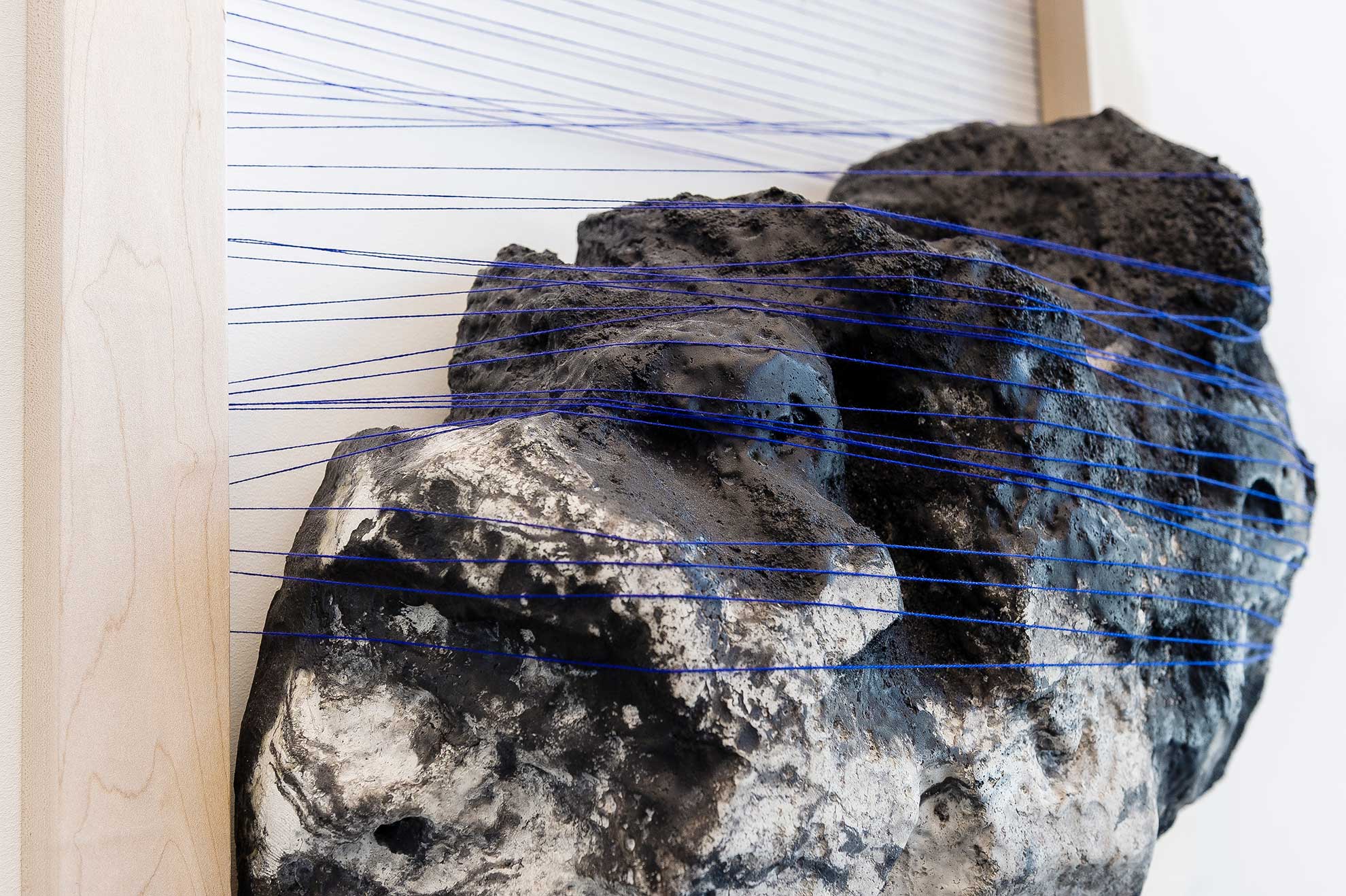
Wall of Portraits | MediaMath, 4 World Trade Center | Image by Paula Abreu Pita, courtesy of artist
Do places you’ve traveled to inspire you or influence your work at all?
Definitely. Whenever a new piece is commissioned, I like to visit the place during planning. The architectural and cultural environment of where the piece will live is a huge inspiration for me, and influences how it comes to life.
The piece I just did for Airbnb in Seattle was inspired by topographical map images of Mount Rainier National Park. I wanted to create a monument to honor Seattle’s coastline and mountains—to bring the mountains inside.
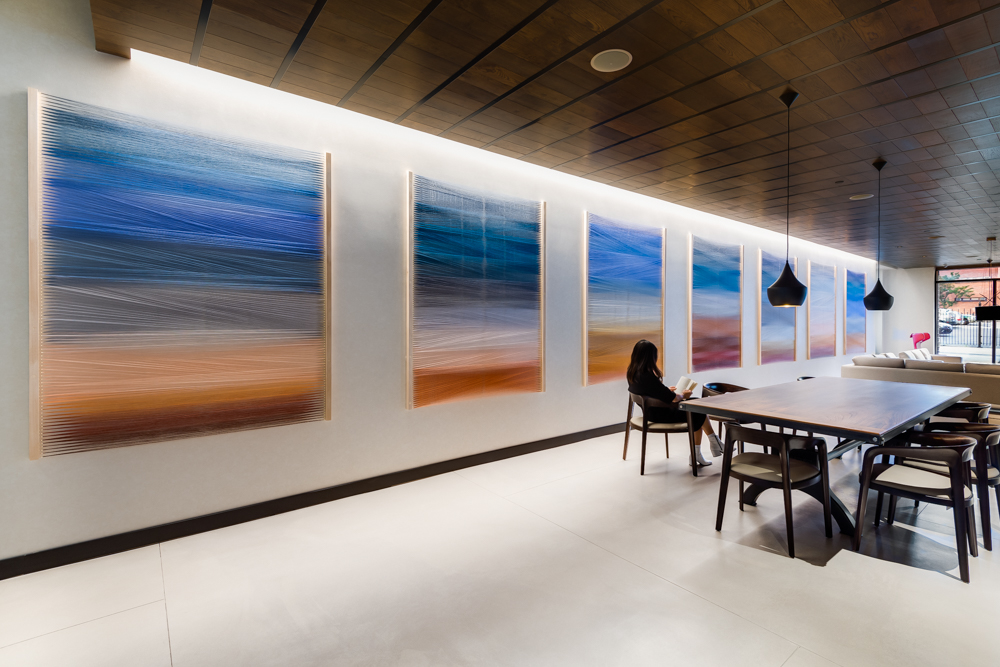
Study of the Sun | Taconic Investment Partners & Handel Architects | Image by Paula Abreu Pita, courtesy of artist
What does your design process look like?
The pieces all vary based on the culture of the installation site, but I tend to come back to certain materials—rope, thread, rock, marble—again and again. My work is all about material play—I want to make people see material differently. For example, transforming rope into a glowing structure so when people see it, it doesn’t look like a rope at all.
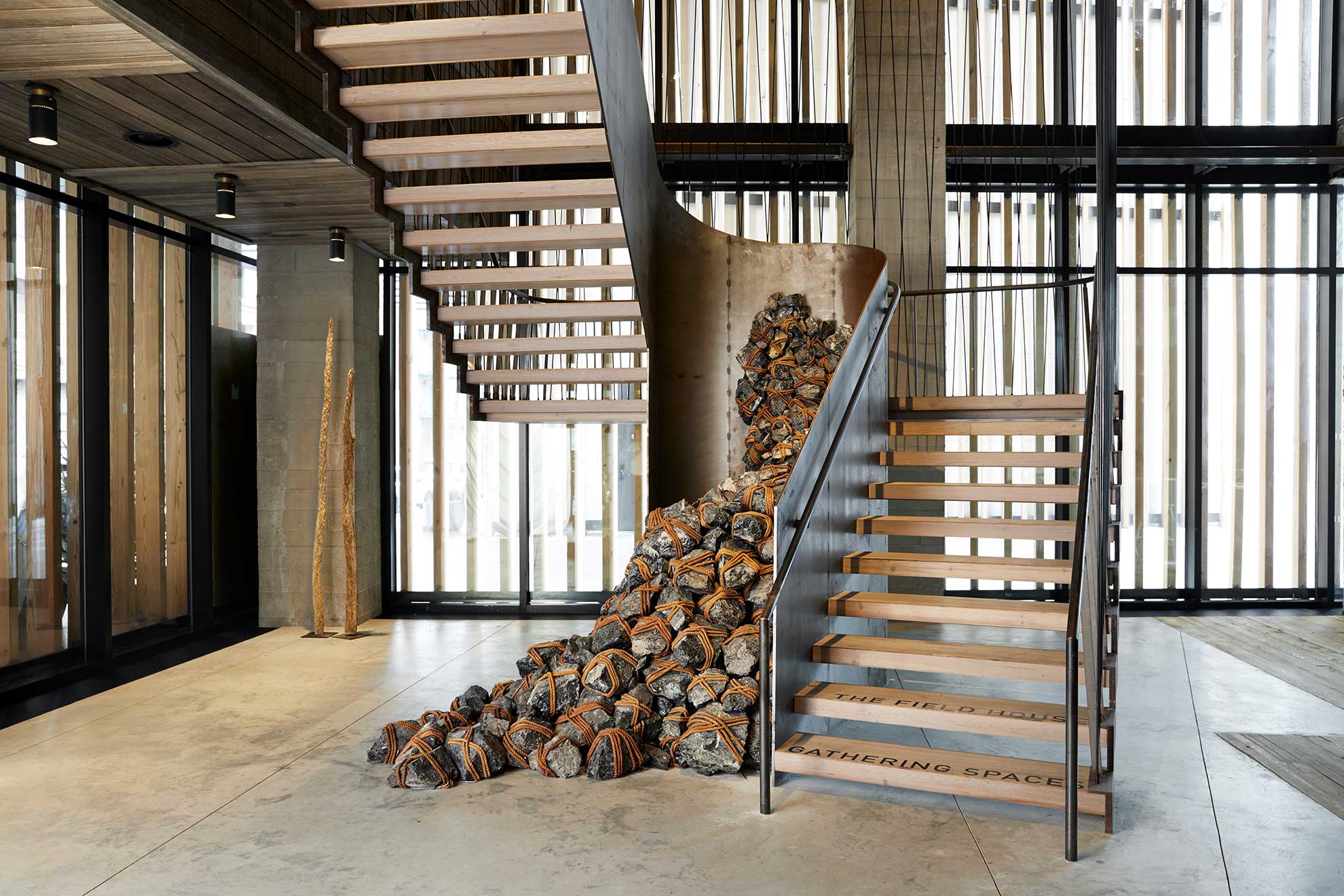
Unbounded, 2017 | 1 Hotel Brooklyn Bridge | Image by James Baigrie, courtesy of the artist
What’s the most challenging material you’ve worked with?
I create a lot of work with pigmented cast concrete, which can be very difficult to work with simply because of its weight. In a series of sculptures I’m currently developing, I’m creating large slabs of concrete that fold like fabric, and are the same size as my body. I need at least one other person to help me move them, which can be challenging, especially when all you want to do is flip it over to sand the other side. Concrete is also a material you need to know really well to achieve the effects you want—the right flowability, color, and so on. At the moment, I’m trying to figure out how to achieve the same faux marble effects and thin slab-like forms without the weight, because ultimately I’d like to create pieces even larger than I am.
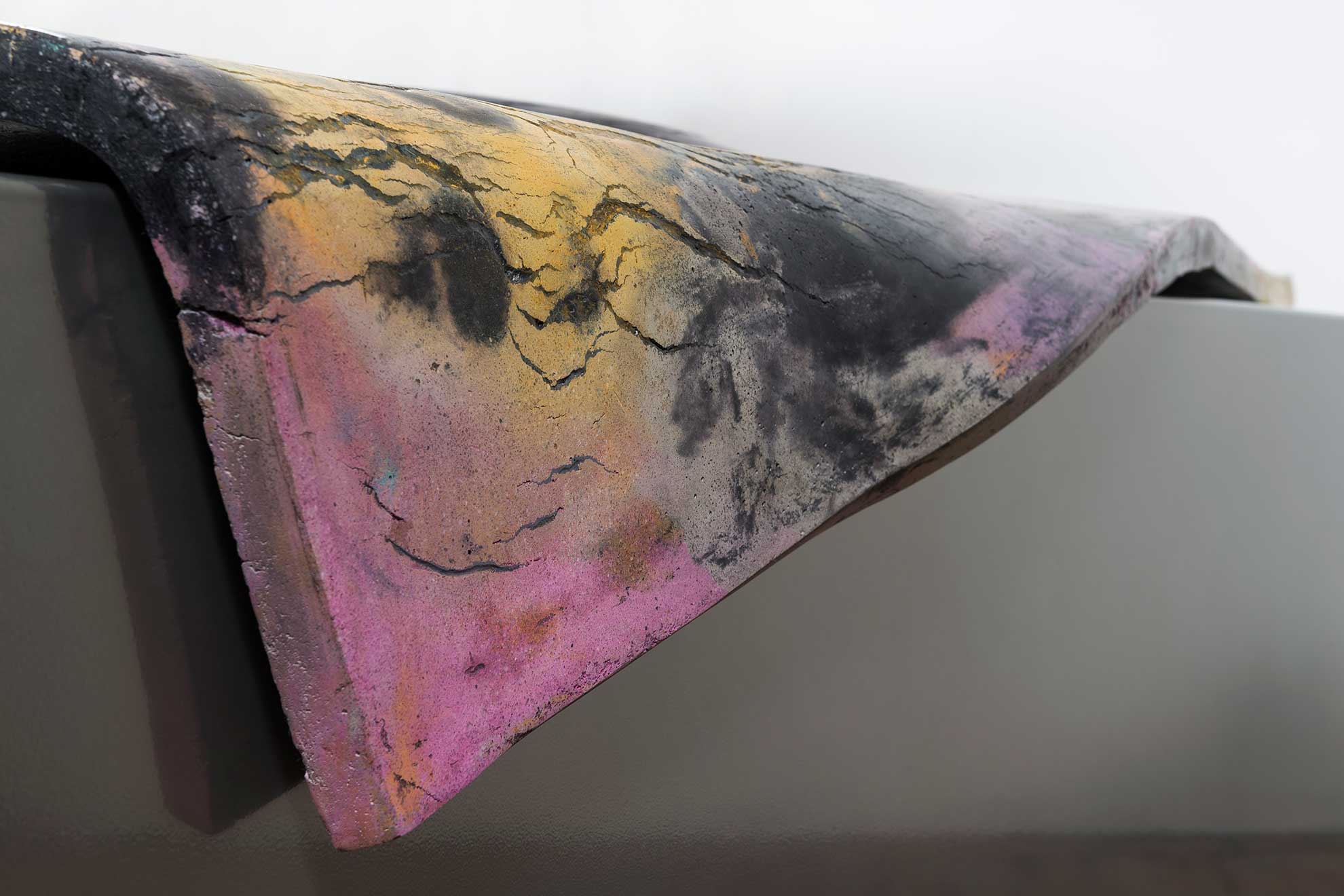
Fold I, 2017 | Images by Sean Fader, courtesy of LMAK Gallery
Where do you find your inspiration?
Oftentimes I get my inspiration from natural forms. For example, the pieces I created for Airbnb and for the US Embassy in Kyrgyzstan used topographical maps as source material. But more often, I’m inspired by raw materials—slabs of marble, craggy obsidian boulders, the sheen of nylon rope, etc.
While my work is concerned with questioning and pushing the limits of materials, much of my inspiration comes from human psychology, and my own personal psychology.
“I’m interested in the limits and boundaries we create for ourselves—the tension that comes from feeling constrained and free, the blurry space between strength and fragility.”
All humans understand and experience these states of being so our experiences are my source material.
Can you share more about the process of making the Airbnb installation?
The piece for the Seattle office is the biggest I’ve made, to date. The planning started in November of 2017, and the physical work began in January. The piece features 50,000 feet of rope—which is a little over 9 miles—and measures at 36x20x20 feet. Each of the 3,600 ropes are attached to cables, so there are 7,200 connection points.

It was honestly more work than I had anticipated, and I had five assistants working with me on the project. There was a fun surprise element to the piece for me, too. We built the whole thing in sections in my Brooklyn studio, then shipped them off to Seattle where we installed over the course of a week. That’s where I got to see it in full, and it all became real.
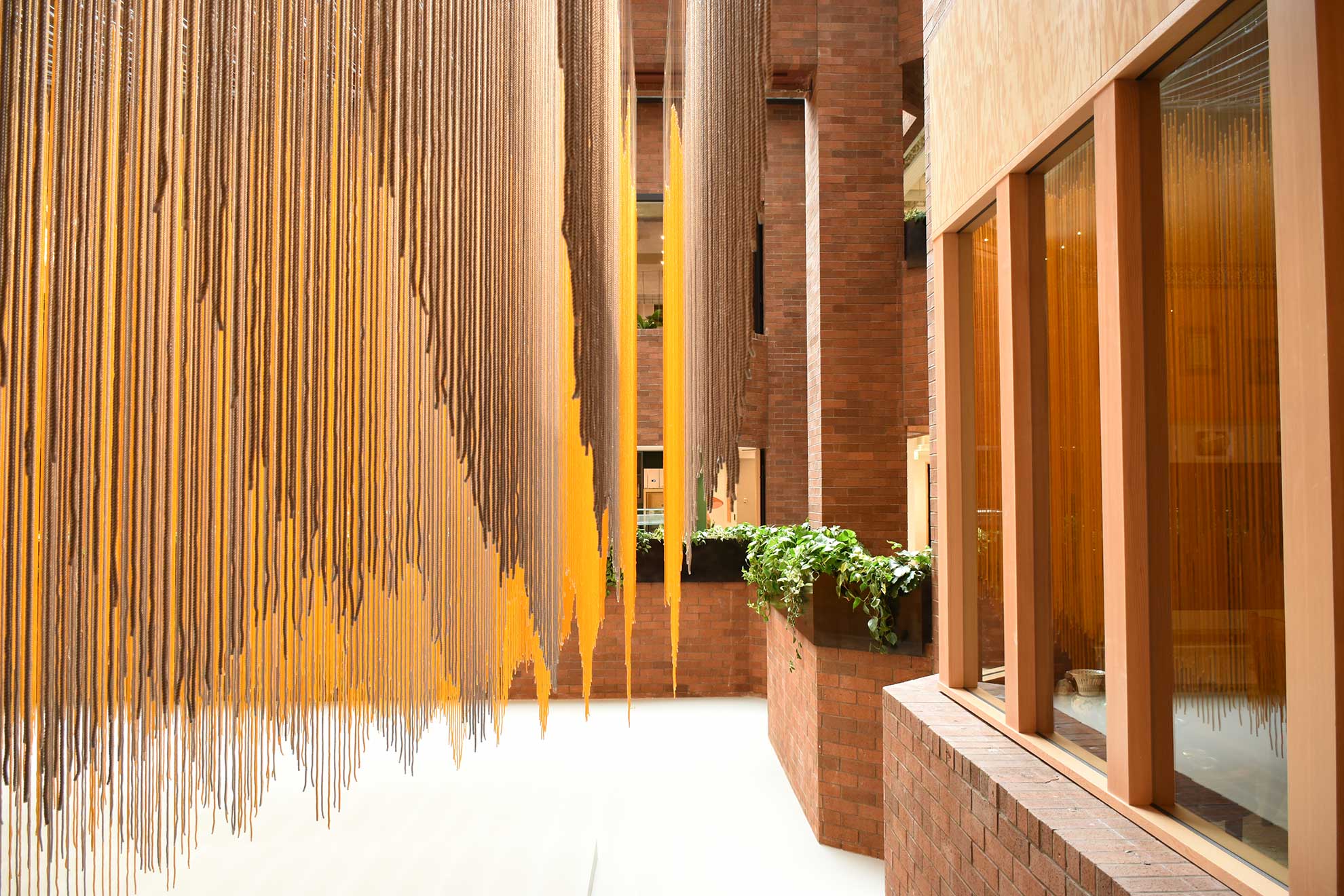
What challenges have you faced in your career?
Well for the pieces themselves, each one comes with its own challenges, spacial limitations, and complications. From a career perspective, being a female sculptor who makes large-scale work has been difficult at times. I’ve often felt the need to provide more evidence that I know what I’m doing than my male counterparts have to. In reality, it’s not my first rodeo. But with each new project and as I progress in my career, the work begins to speak for itself.
“There aren’t many women in the industry who do this kind of big work, which is why most of the assistants I employ are women. It’s important for us to have a community and to support each other.”

What advice would you give to artists who are just getting started?
Success in the art world demands persistence—it’s an uphill climb. And being an artist involves a lot of rejection. Getting the gig 1/10 times means you’re doing great.
My advice would be to keep applying to fellowships and residencies—keep putting your work out there. Even if you don’t get the opportunity you were hoping for in that moment, you never know who saw your work, and what other opportunities can arise because of that.
